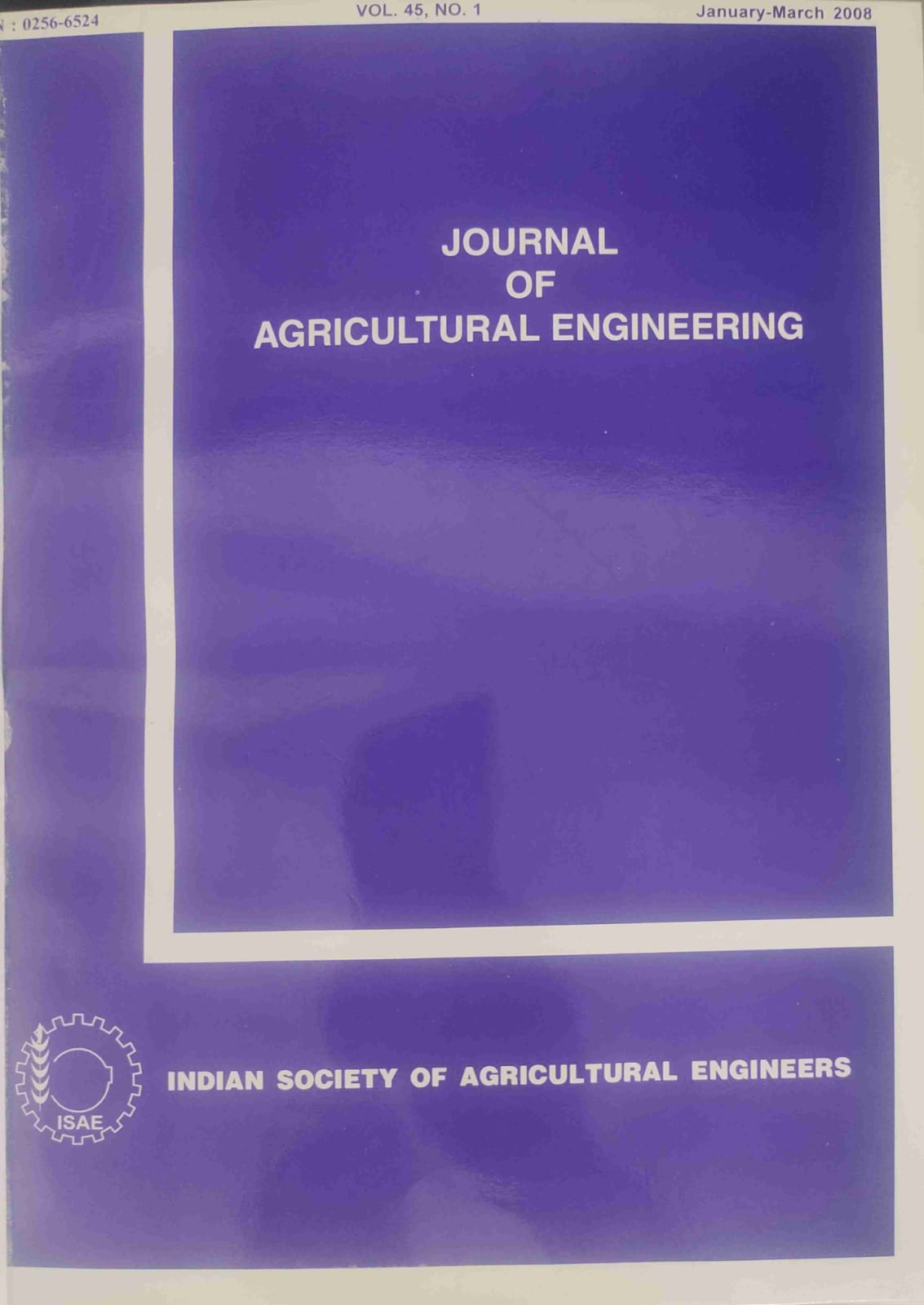Geomorphological Parameters Based Watershed Sediment Yield Estimation
DOI:
https://doi.org/10.52151/jae2008451.1313Abstract
Most models available for computation of sediment yield of watersheds use inter-correlated geomorphologic parameters of the watershed which is against the principle of regression analysis. Principal components which are transformed but unrelated were derived from the set of correlated geomorphological parameters of watersheds. In this study eleven watersheds were selected. Out of which the data of term watersheds were utilized for the development of models and the data of one watershed were utilized for validation of the models. Twenty-two numbers of geomorphological parameters were quantified for each selected watershed. It was found that the geomorphological parameters are correlated among themselves. So these parameters were transformed into the scores of principal components to make them uncorrelated. Then multiple regression models between sediment production rate (SPR) and scores of principal components were developed using principal component regression in Statistical Analysis System (SAS) environment. The average absolute deviation of predicted SPR was found within 10.55% and 5.43% for different percent ranges of runoff and ranges of rainfall. Hence the developed model can be used for better prediction of SPR for other similar ungauged watershed.
References
Chen C N; Tsai C H; Tsai C T. 2006. Simulation of sediment yield from watershed by physiographic soil erosion-deposition model. J. Hydrology, 327(3&4), 293-303.
Chow V T. 1964. Handbook of Applied Hydrology. McGraw Hill Book Company, Inc., New York.
Ghose B; Pandey S; Singh S. 1969. Quantitative geomorphology of the drainage basins in semi-arid environment. Annals of Arid Zone, (1), 37- 44.
Horton R E. 1945. Erosional development of streams and their drainage basins; hydrological approach to quantitative morphology. Geol. Soc. Am. Bull, 56, 370-375.
Johnson A R; Wichern D W. 2002. Applied Multivariate Statistical Analysis, fifth edition, first Indian reprint, Pearson Education Asia, Singapore.
Jose C S; Das D C. 1982. Geomorphic prediction models for sediment prediction rate and intensive priorities of watersheds in Mayurakshi catchment. Proceedings of the International Symposium on Hydrological Aspects of Mountainous Watershed, School of Hydrology, University of Roorkee, Roorkee, Nov. 4 - 6.
Lopes V L; Canfield H. E. 2004. Effect of watershed representation on runoff and sediment yield modeling. J. American Water Res. Assoc., 40(2), 311-319.
Sharma K D; Murthy J S R. 1998. A practical approach to rainfall-runoff modeling in arid zone drainage basins. Hydrological Sciences-J., 43(3), 331-348.
Singh S; Ghose B. 1973. Interrelationships between quantitative geomorphic characteristics of the drainage basins in sub-humid to humid environment of Rajasthan. Annals of Arid Zone, 12(1&2),82-99.
Singh S; Sharma K D.1979. Application of aerial photointerpretation in the investigations of the small drainage basins in sand stone region of Jodhpur. The Deccan Geographer, 17(3), 616-625
Singh S. 1994. Remote sensing in the Evaluation of Morpho-hydrological characteristics of the Drainage Basins of the Jojri catchment. Annals of Arid Zone, 33(4), 273-278.
Singh S. 1995. Quantitative Analysis of Watershed Geomorphology Using Remote Sensing Techniques. Annals of Arid Zone, 34 (4), 243 - 251
Strahler A N. 1964. Quantitative geomorphology of drainage basins and channel networks. Handbook of applied hydrology (Ed V.T. Chow), 439 - 476.














